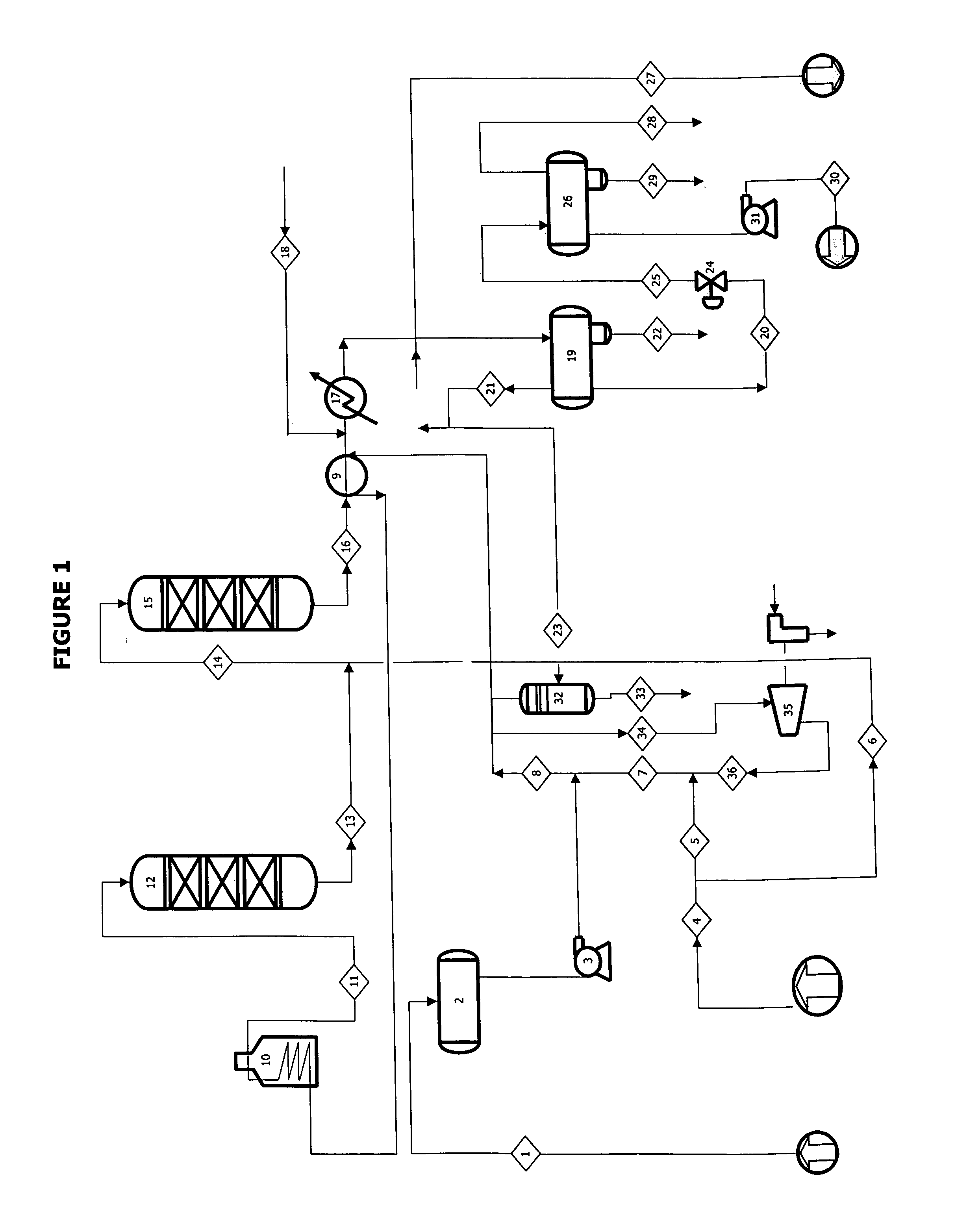Process for the catalytic hydrotretment of heavy hydrocarbons of petroleum
a petroleum and hydrotretment technology, applied in the oil refining industry, hydrocarbon oil treatment, liquid hydrocarbon mixture production, etc., can solve the problems of limited operation of hydrotreatment processes of heavy hydrocarbons of petroleum at low pressure, >, etc., and achieve the effect of improving properties and high removal capacity
- Summary
- Abstract
- Description
- Claims
- Application Information
AI Technical Summary
Benefits of technology
Problems solved by technology
Method used
Image
Examples
example 1
[0061] A specific application of the process of catalytic hydrotreatment of heavy hydrocarbons of petroleum, the motive of the present invention, to obtain a typical feedstock for a conventional refining scheme or for its sale as a hydrocarbon of improved properties, is the one that was carried out on hydrotreating heavy crude with the specific properties that are presented in Table 1, through the combination of low-pressure operating conditions that are shown in Table 2, in two stages of fixed-bed reaction and the use of hydrodemetallization (HDM) and hydrodesulfurization catalysts (HDS), whose properties are presented in Table 3; which together demonstrate that although surprisingly they achieve significant removal of metals, total sulfur, asphaltenes and total nitrogen, the formation of sediments and sludge is unexpectedly limited, and the hydrotreated hydrocarbon of improved properties that is presented in Table 4 is obtained.
[0062] Table 1 shows that the feed does not contain ...
example 2
[0070] Another specific application of the process of catalytic hydrotreatment of heavy hydrocarbons of petroleum of the present invention, is the one which was carried out on hydrotreating the heavy crude of example 1, with the specific properties reported in Table 1, through the combination of low-pressure operating conditions that are shown in Table 5, in a catalytic system in two stages of fixed-bed reaction and the use of HDM and HDS catalysts of example 1, whose properties are presented in Table 3; which together demonstrate notably that the formation of sediments and sludge is limited, as well as attaining significant removals of metals, total sulfur, asphaltenes and total nitrogen, and obtaining the hydrotreated hydrocarbon of improved properties shown in Table 6.
[0071] Unlike the previous example, for this specific application of the invention, only the pressure was modified (to a lower value) and the space velocity (to a higher value) in the second reaction stage of the p...
example 3
[0076] Another specific application of the present invention, to obtain a typical feed for a conventional refining scheme or for its sale as a hydrocarbon of improved properties, was done by carrying out the catalytic hydrotreatment of the heavy crude of examples 1 and 2, with the specific properties reported in Table 1, through the combination of: the low-pressure operating conditions shown in Table 7, in a catalytic system in two stages of fixed-bed reaction and the use of HDM and HDS catalysts of examples 1 and 2, whose properties are shown in Table 3; which together demonstrate that the formation of sediments and sludge is limited, in addition to attaining significant removals of metals, total sulfur, asphaltenes and total nitrogen, and obtaining the hydrotreated hydrocarbon of improved properties shown in Table 8.
[0077] Unlike example 1, for this specific application of the invention, only the space velocity was-modified (to a higher value, as in example 2) in the second react...
PUM
 Login to View More
Login to View More Abstract
Description
Claims
Application Information
 Login to View More
Login to View More - R&D
- Intellectual Property
- Life Sciences
- Materials
- Tech Scout
- Unparalleled Data Quality
- Higher Quality Content
- 60% Fewer Hallucinations
Browse by: Latest US Patents, China's latest patents, Technical Efficacy Thesaurus, Application Domain, Technology Topic, Popular Technical Reports.
© 2025 PatSnap. All rights reserved.Legal|Privacy policy|Modern Slavery Act Transparency Statement|Sitemap|About US| Contact US: help@patsnap.com



